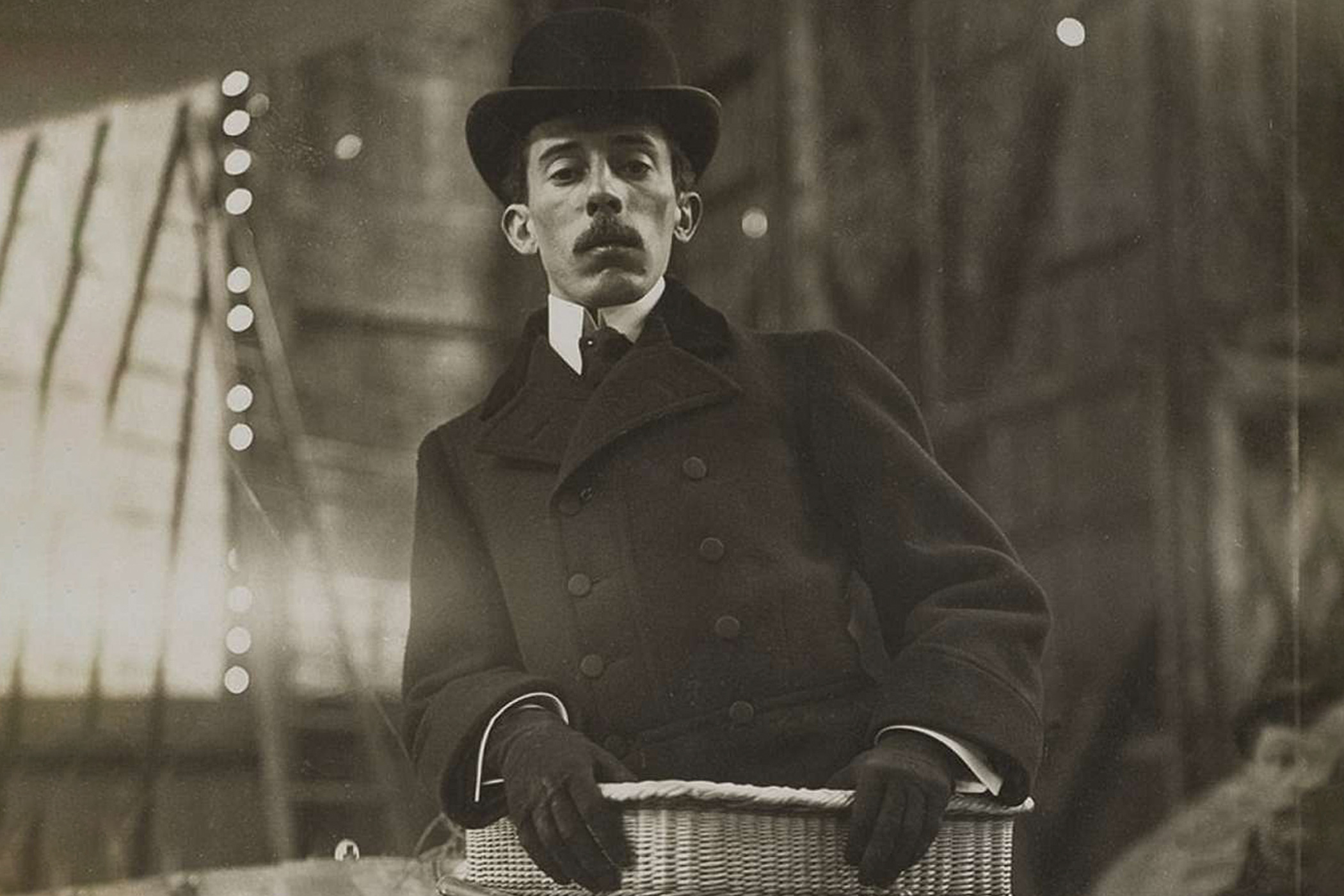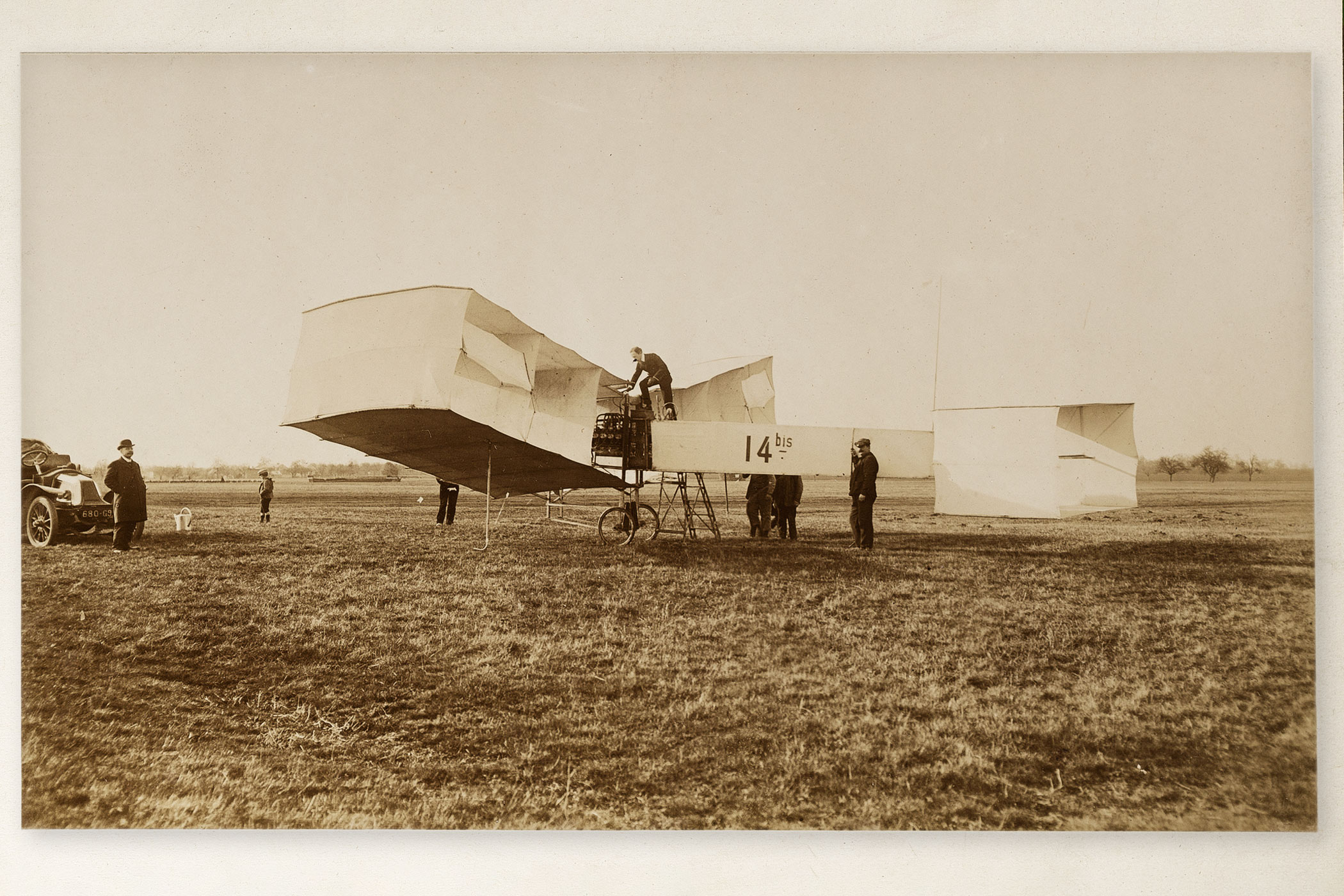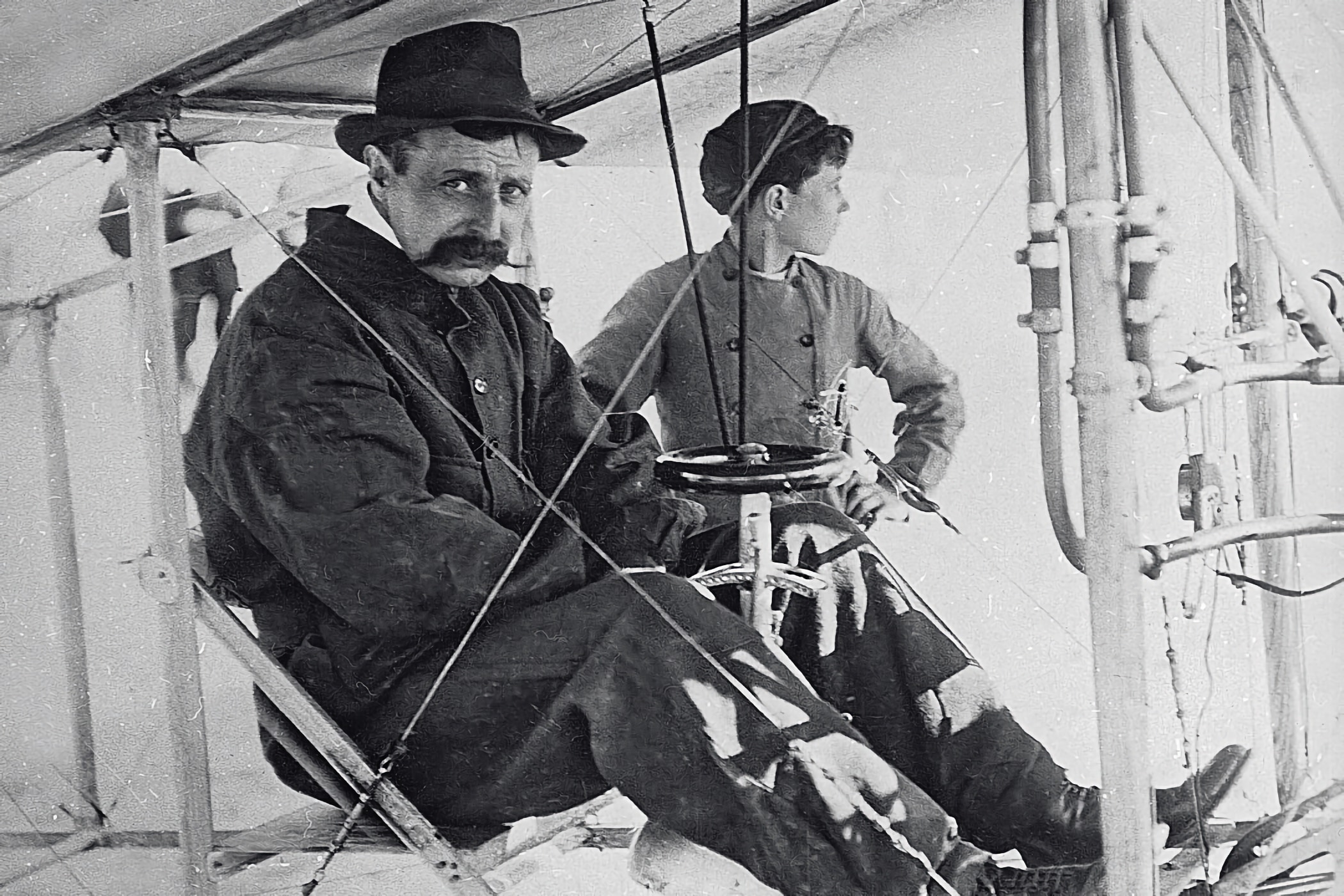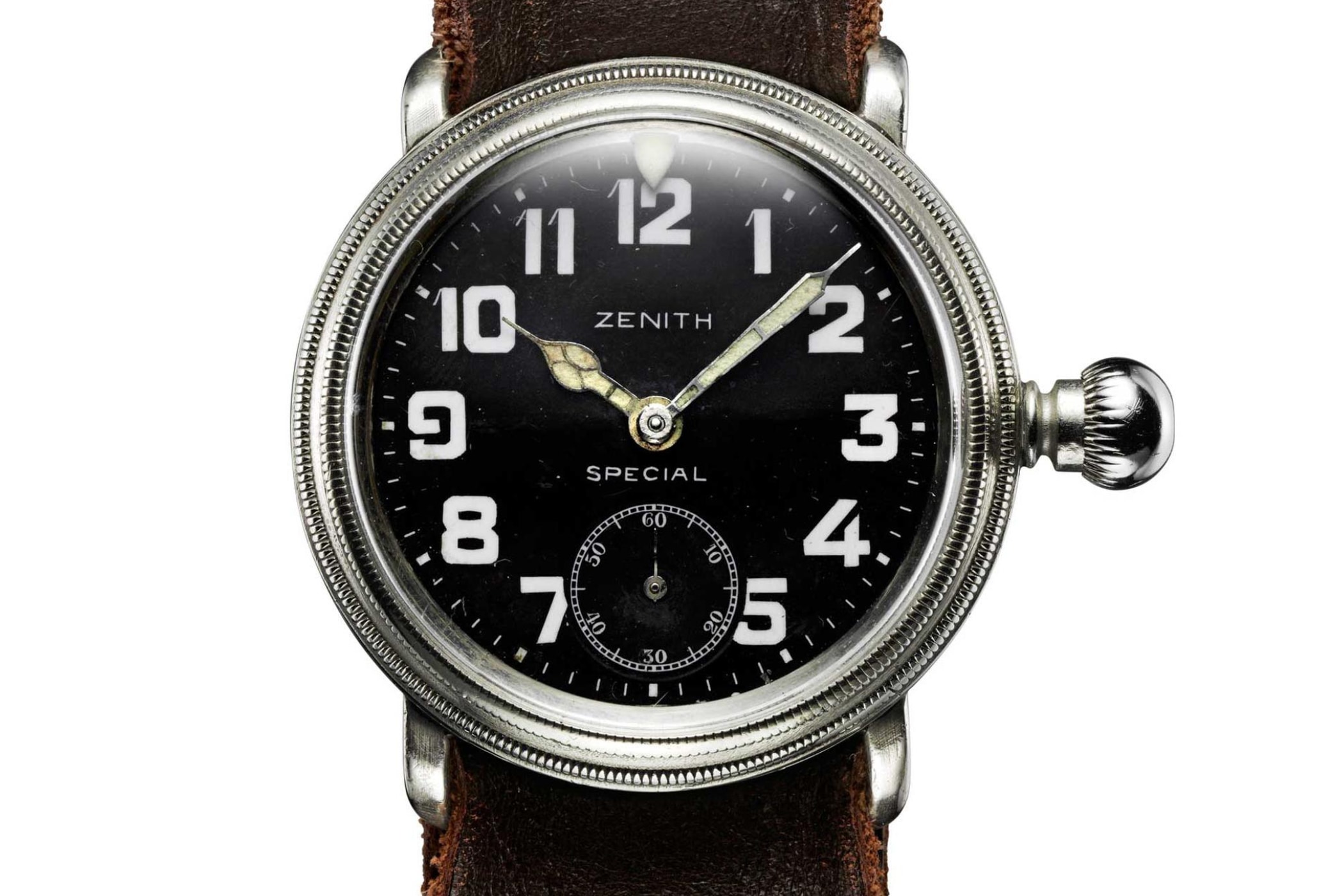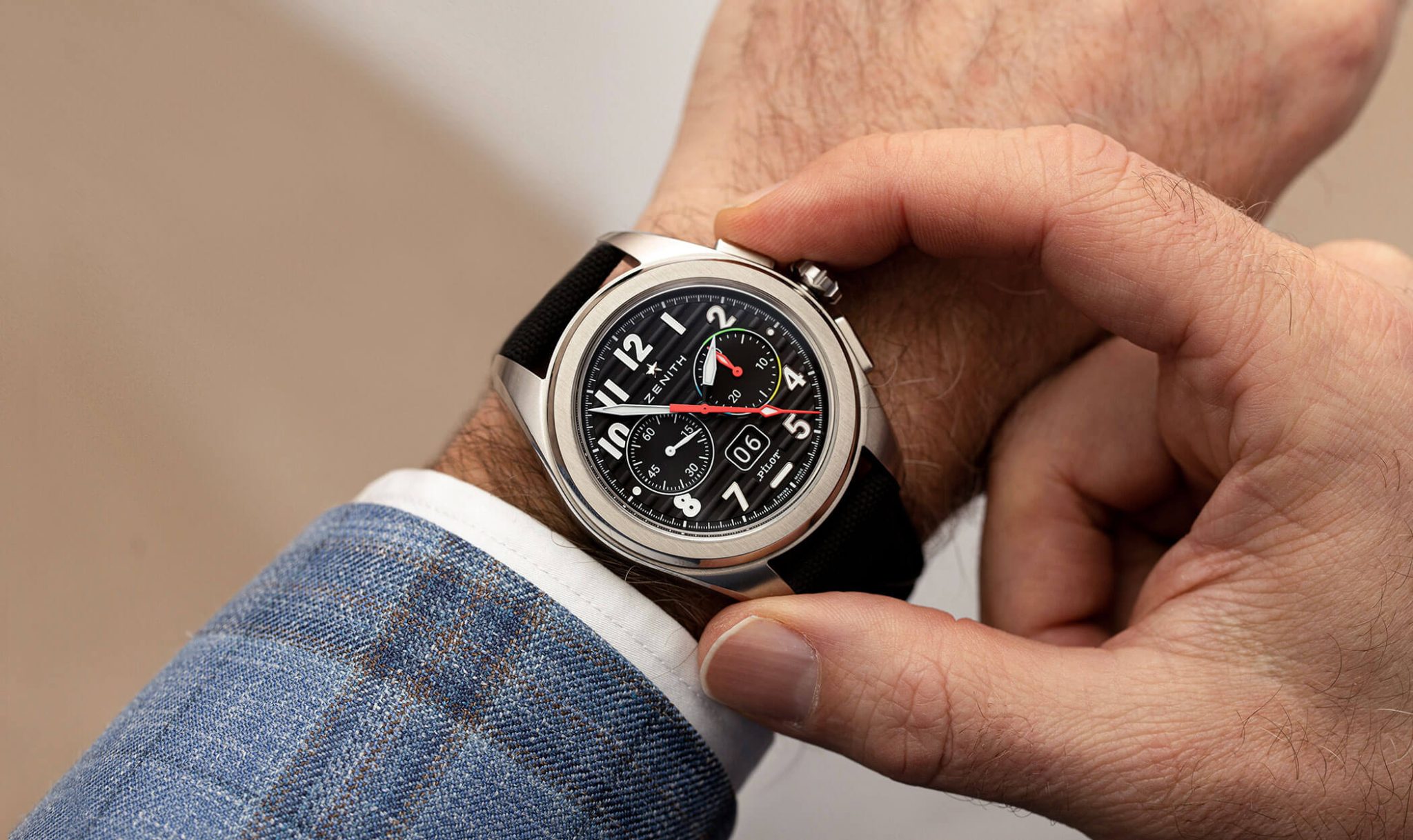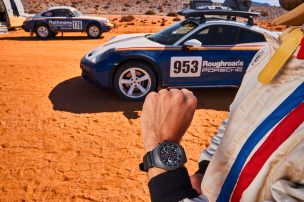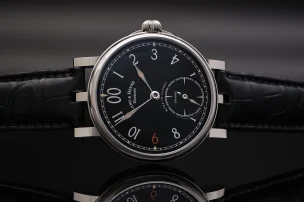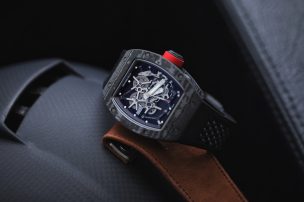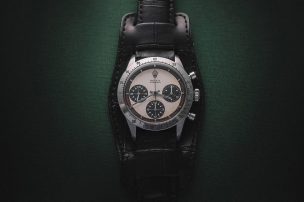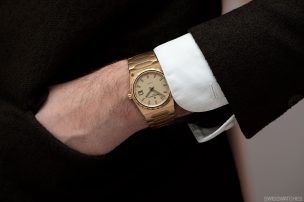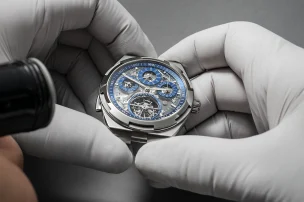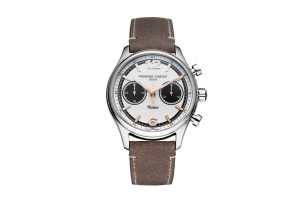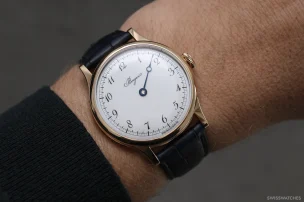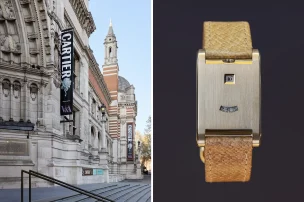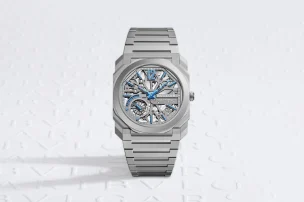
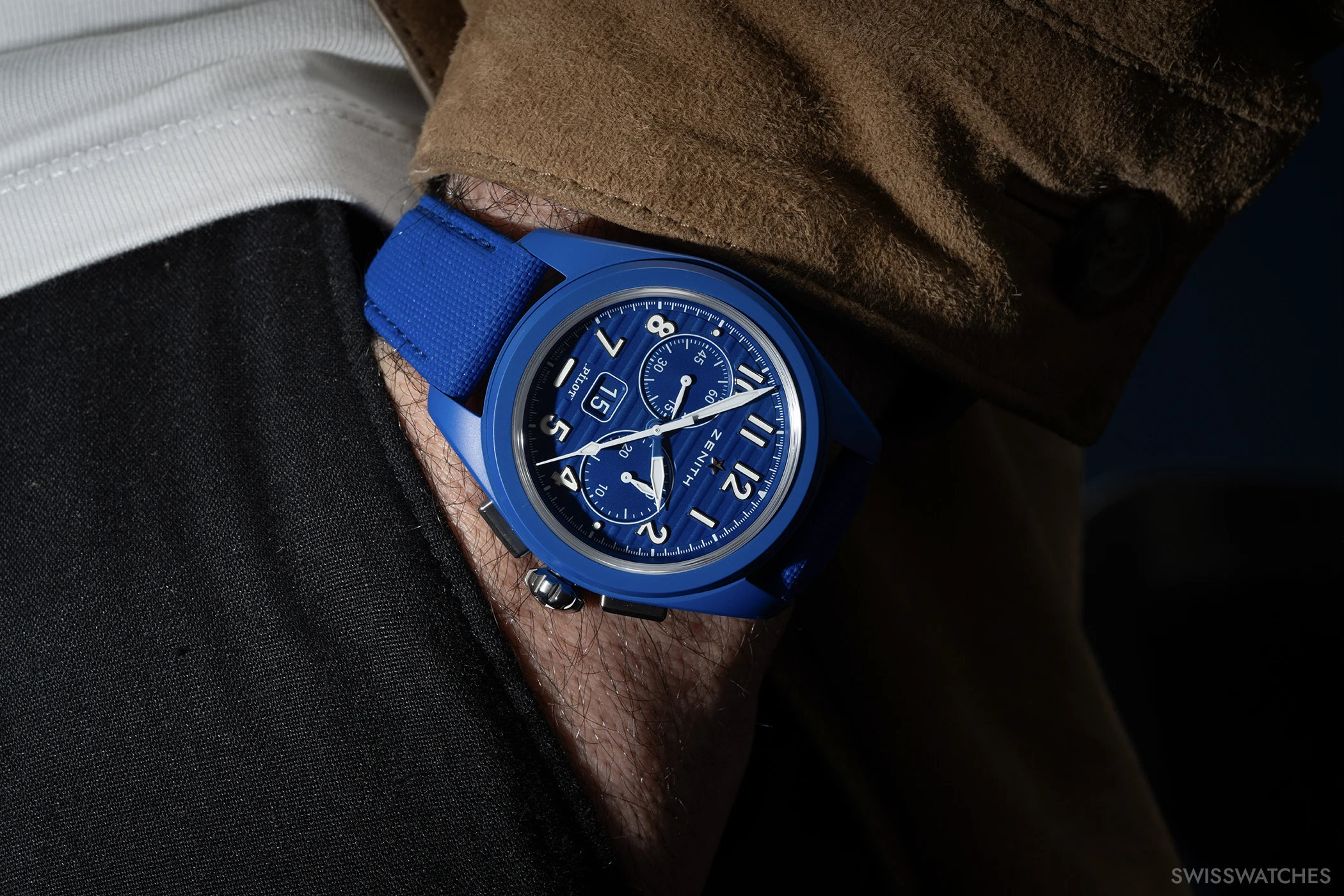
Zenith Turns 160 And Recalls The Incredible Journey of Their Pilot’s Watch With an Anniversary Edition
Did you know that Zenith was the second watch brand to create and manufacture wristwatches specifically for pilots? And it gets even better! Visionary and Zenith founder Georges Favre-Jacot had the term “Pilot” trademarked long before humans took to the skies.
It is therefore only logical that the brand is dedicating a very special edition to its pilot’s watch line to mark its 160th anniversary. The Pilot Big Date Flyback 160th Anniversary Edition is part of the Blue Ceramic Chronograph Trilogy – 160th Anniversary Edition, is limited to 160 pieces and is the first model in the trilogy that is available from now.
Pilot’s watches are part of many collections and can be found on even more wrists. In terms of quantity, however, they probably do not come close to their counterparts: the diver’s watch category. But in watchmaking, quality comes before quantity.
The triumph of aviation and its watches
The history of pilot’s watches is logically closely linked to the development of aviation. The 17th December 1903 marks a very special date. Back then, the Wright brothers took off in their motorised biplane for no less than twelve seconds. A world sensation.
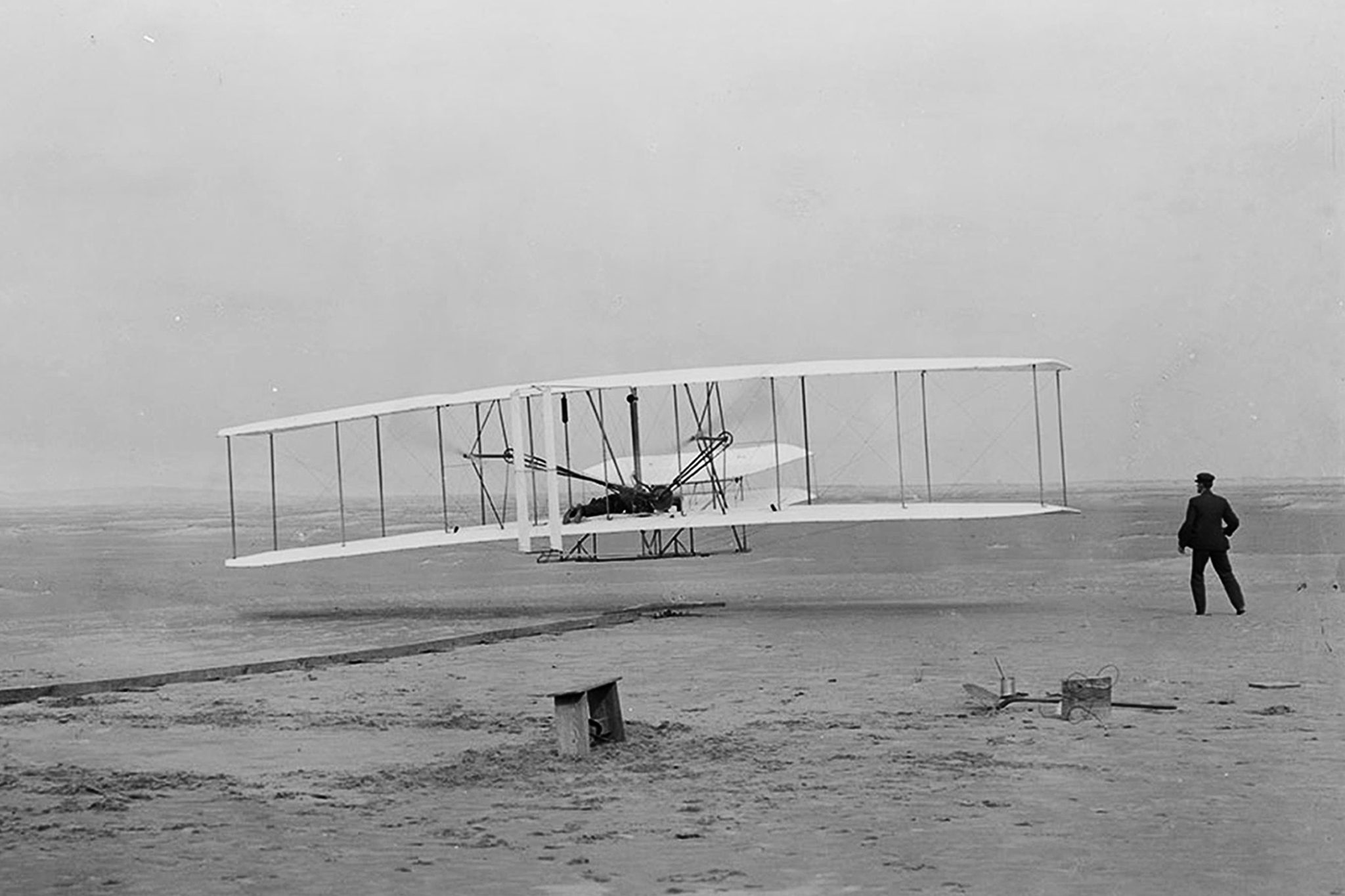
Orville Wright flies the Flyer motorised aircraft while his brother Wilbur watches the flight.
Credit © Cartier
This flight time was probably measured with a pocket watch at the time. Although wristwatches had been around for a long time. But until well into the 20th century, timepieces worn on watch chains remained the preferred choice – at least for men. Women had long since discovered the advantages of wearing a watch on their wrist. The first real wristwatch dates back to 1806, made for and worn by Auguste Amalia Ludovika of Bavaria.
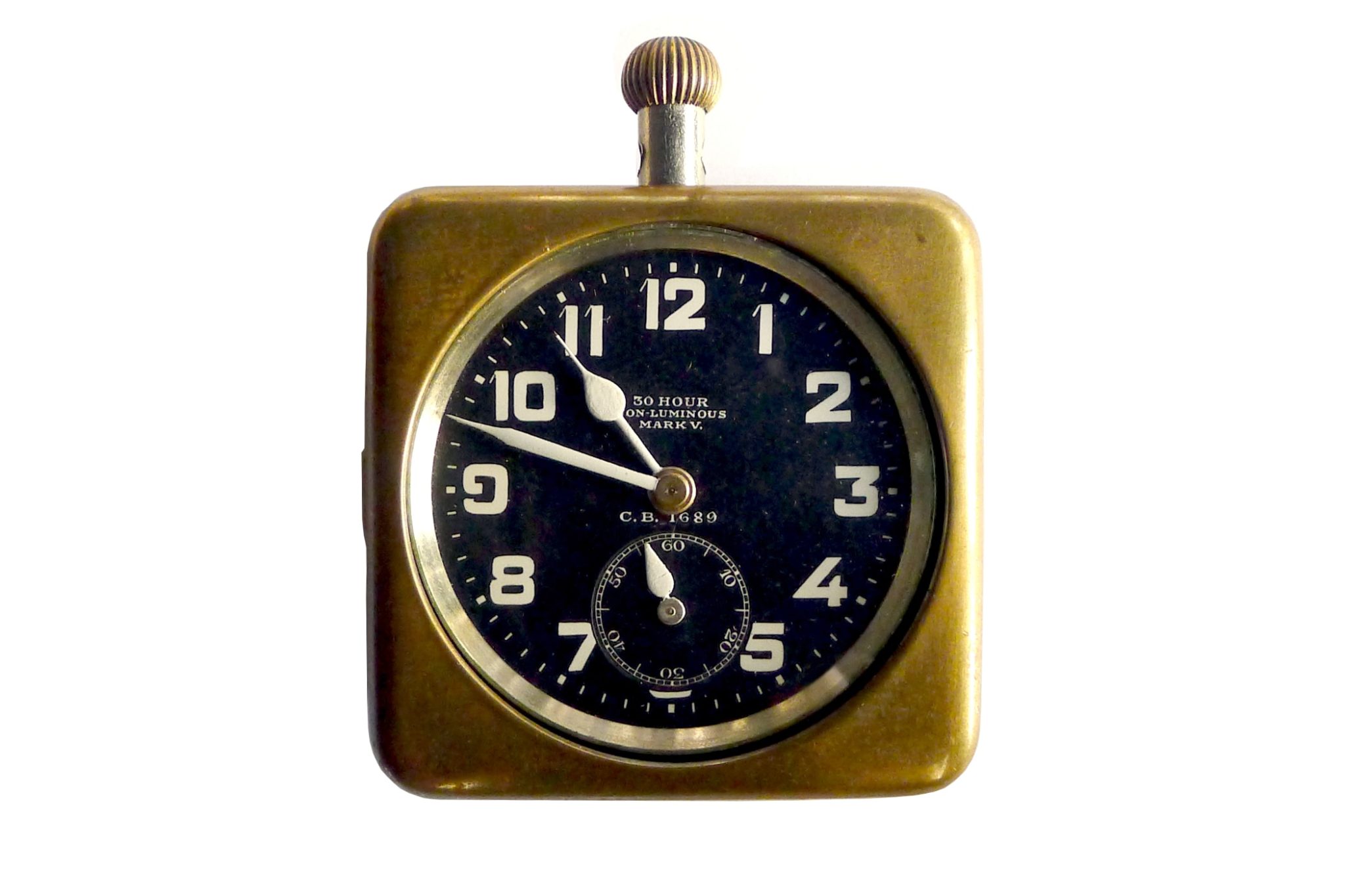
A Zenith pilot’s pocket watch used by Royal Air Force pilots between 1916 and 1918.
Pocket watches were only increasingly replaced at the beginning of the 20th century, during the advent of aviation. It is probably an exaggeration to say that the one caused the other. However, it is true that wristwatches were particularly valued by two professional groups: Military members and aviators.
Wearing comfort, free hands and quick reading were essential, especially for pilots, as they depended on a reliable and easy-to-read watch for navigation. According to history, Cartier produced a wristwatch for aviation pioneer Alberto Santos-Dumont in 1904, which went into series production in 1911 and is still part of the brand’s portfolio today as the Santos. It is considered to be the first known pilot’s watch.
Alberto Santos Dumont around 1907/1908 (left) and Santos-Dumont and his 14-bis (right)
Credit © Cartier
Zenith follows in second place on the pilot’s watch timeline. The visionary founder of the manufacture, Georges Favre-Jacot (1843-1911), had the pilot theme on his radar much earlier.
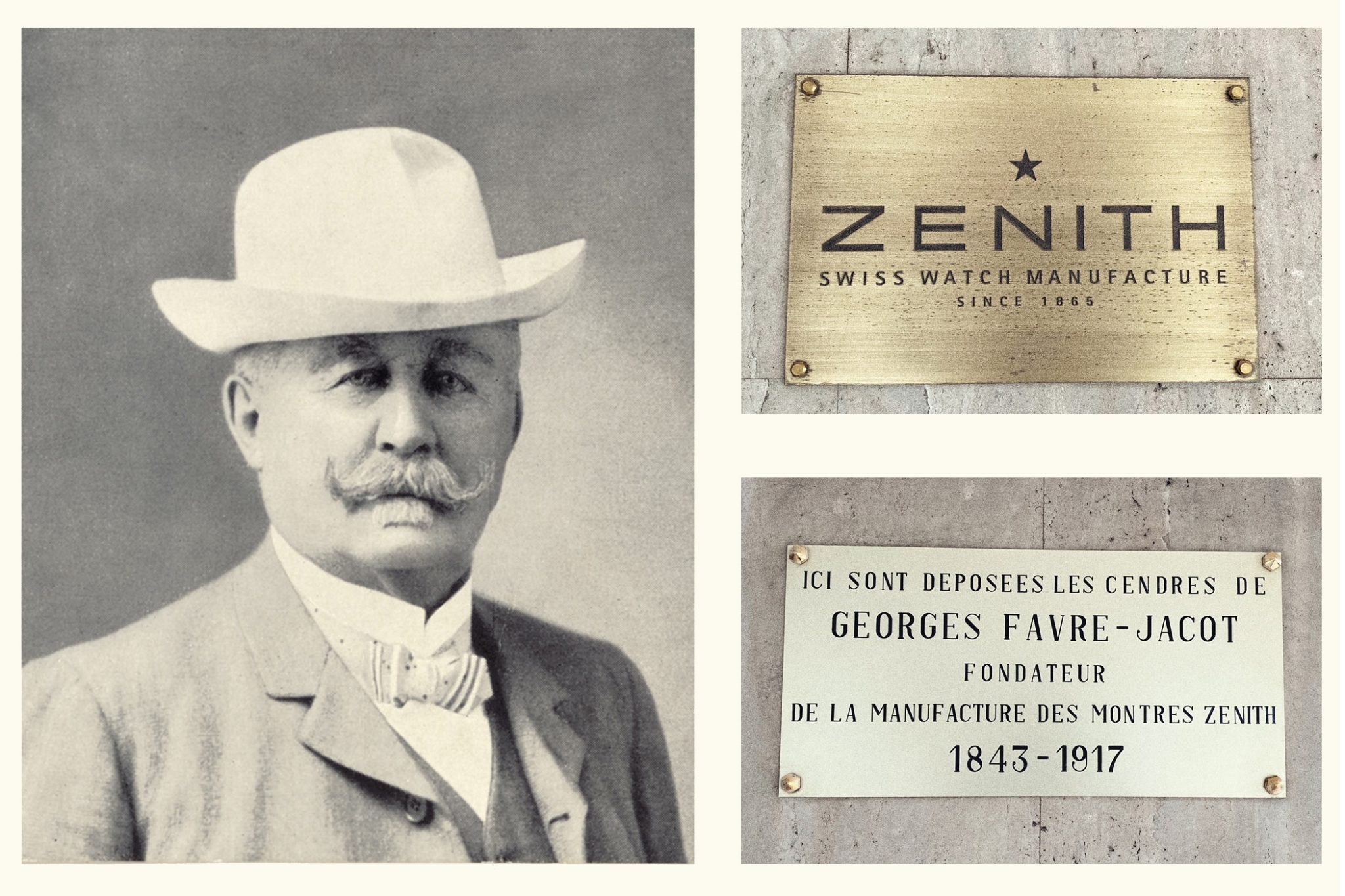
Georges Favre-Jacot, founder of Zenith
He was convinced that man would soon succeed in conquering the skies – at a time when aviation was more a collection of experiments, calculations and crash landings. And so the watchmaker patented the French word ‘Pilote’ as early as 1888. The English term ‘Pilot’ followed in 1904. This means that Zenith is still the only company authorised to write ‘Pilot’ on its dials today.
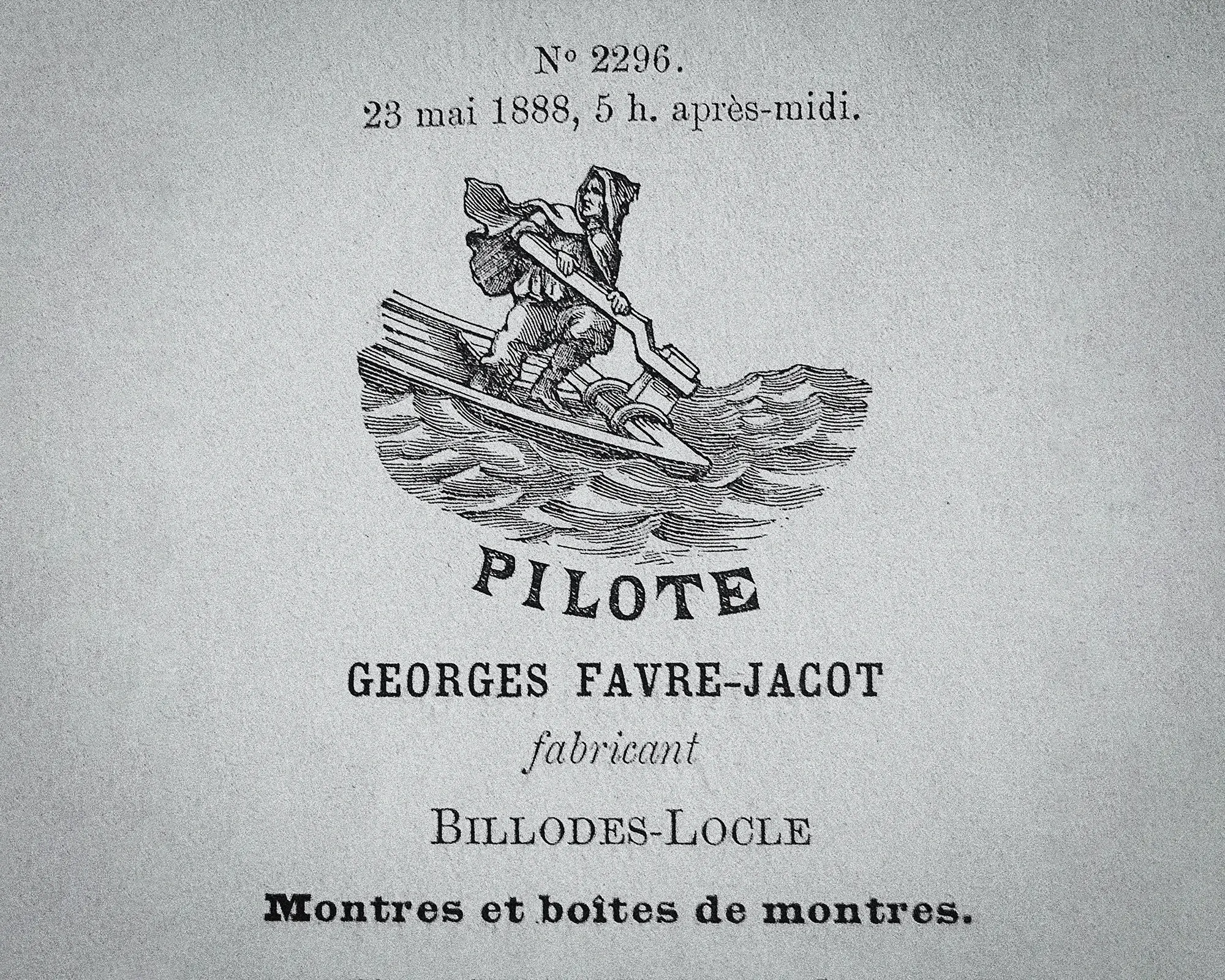
In the following years, the manufacture developed into one of the leading producers of specialised watches and instruments for pilots. They enjoyed great popularity and were used by aviation pioneer Louis Blériot, among others, who made history in 1909 with the first flight across the English Channel.
Louis Blériot and his Zenith wristwatch
Credit © thejewelleryeditor
El Primero: Chronograph beats pilot’s watch
However, the Pilot logo only appeared on the dial of a Zenith watch for the first time in 1957, only to quickly disappear again. Although the model at the time, with its anti-magnetic, shockproof and waterproof features in the look of a dress watch, would certainly have had the makings of a long seller.
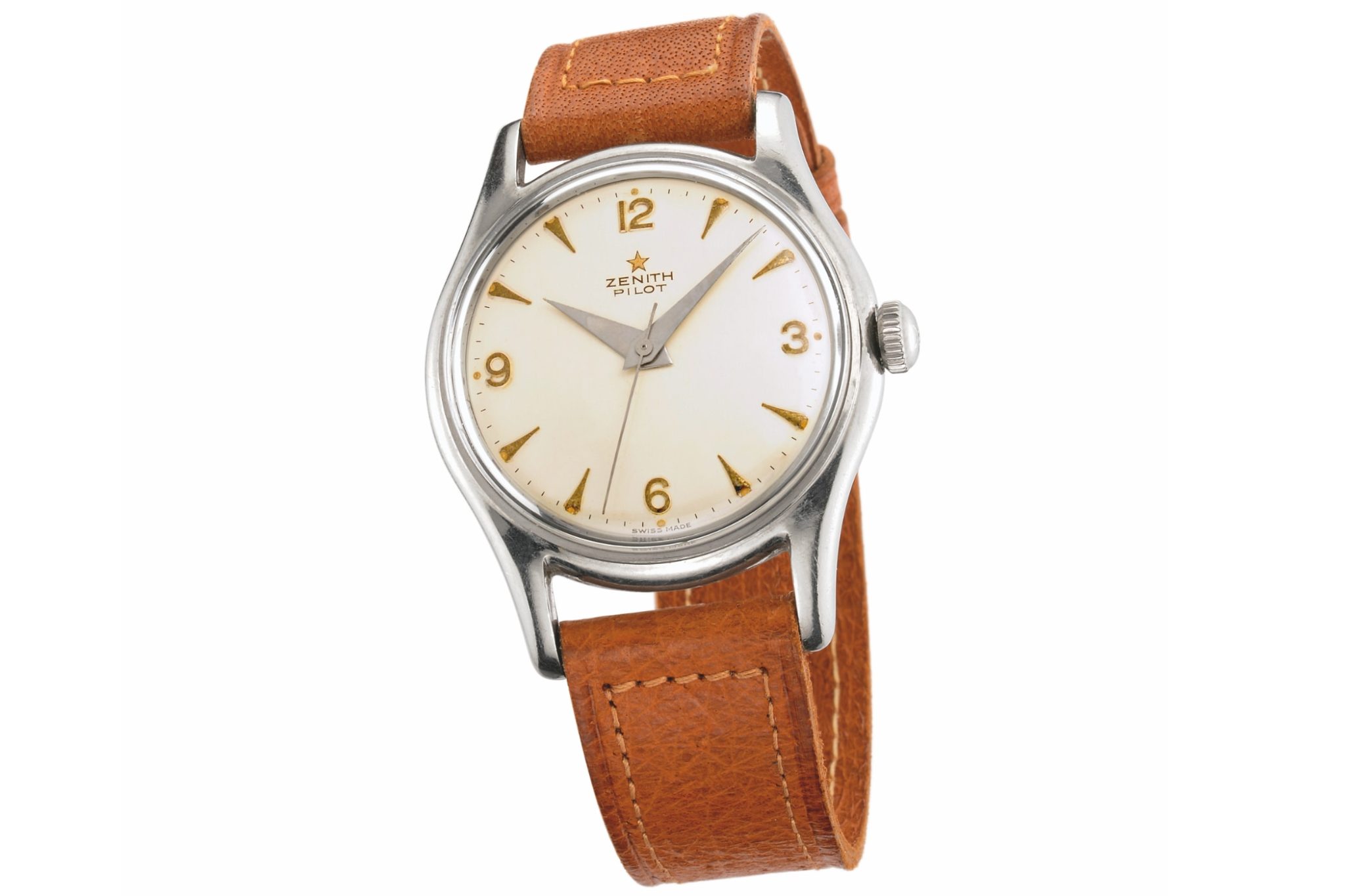
A pilot from the 1950s
However, in the years – or rather decades – that followed, Zenith dedicated itself primarily to the development of a high-frequency chronograph calibre. Every watch enthusiast knows who this story continues: it is called El Primero, was introduced in 1969 and was the world’s first automatic chronograph calibre. Although Zenith once again released a limited edition of pilot’s watches for the Italian Air Force, the Tipo CP-2, between 1968 and 1972, it was not until many years later that the Pilot took off to new heights.
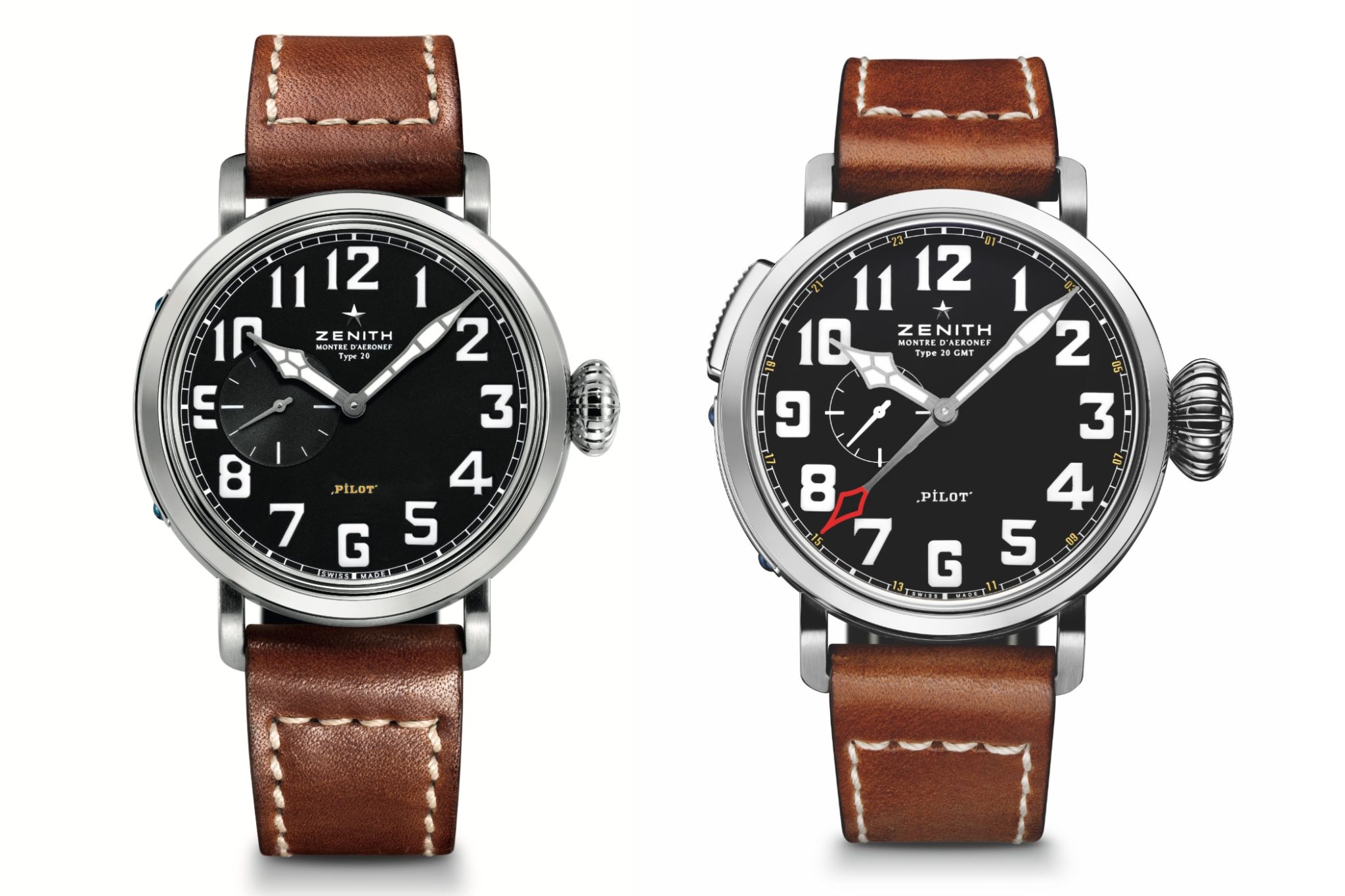
Montre d’Aéronef Type 20 (2012) & Montre d’Aéronef Type 20 GMT (2013)
Ready for take-off: Zenith’s Pilot takes off again in 2012
The ‘maiden flight’ took place in 2012 with the launch of the Pilot Montre D’Aéronef Type 20, limited to 250 units – and it was a real eye-catcher. If only because of its diameter of 57.5 millimetres, which is probably no longer for sale today: a reminiscence of the instruments in an aircraft cockpit.
The case, which was fortunately made of lightweight titanium, also housed a tribute-worthy inner workings in the form of the high-precision hand-wound calibre 5011K. This was originally designed as a pocket watch movement and set a record for accuracy at the Neuchâtel Observatory in 1967.
Another Pilot followed in 2014, which can probably be labelled ‘Well meant is not necessarily well done’. This Pilot Type 20 was equipped with a Sellita movement – an absurdity for watch collectors for a brand like Zenith with so much expertise in movement construction. The idea was to make it possible for more Pilot fans to buy such a watch with a more affordable version.
Zenith quickly realised that it was on the wrong track and that same year presented the Pilot Type 20 GMT 1903 with a second time zone and, of course, an in-house calibre, the Elite 693. The diameter of the titanium case of the model, which was limited to 1,903 pieces, was still an impressive 48 millimetres.
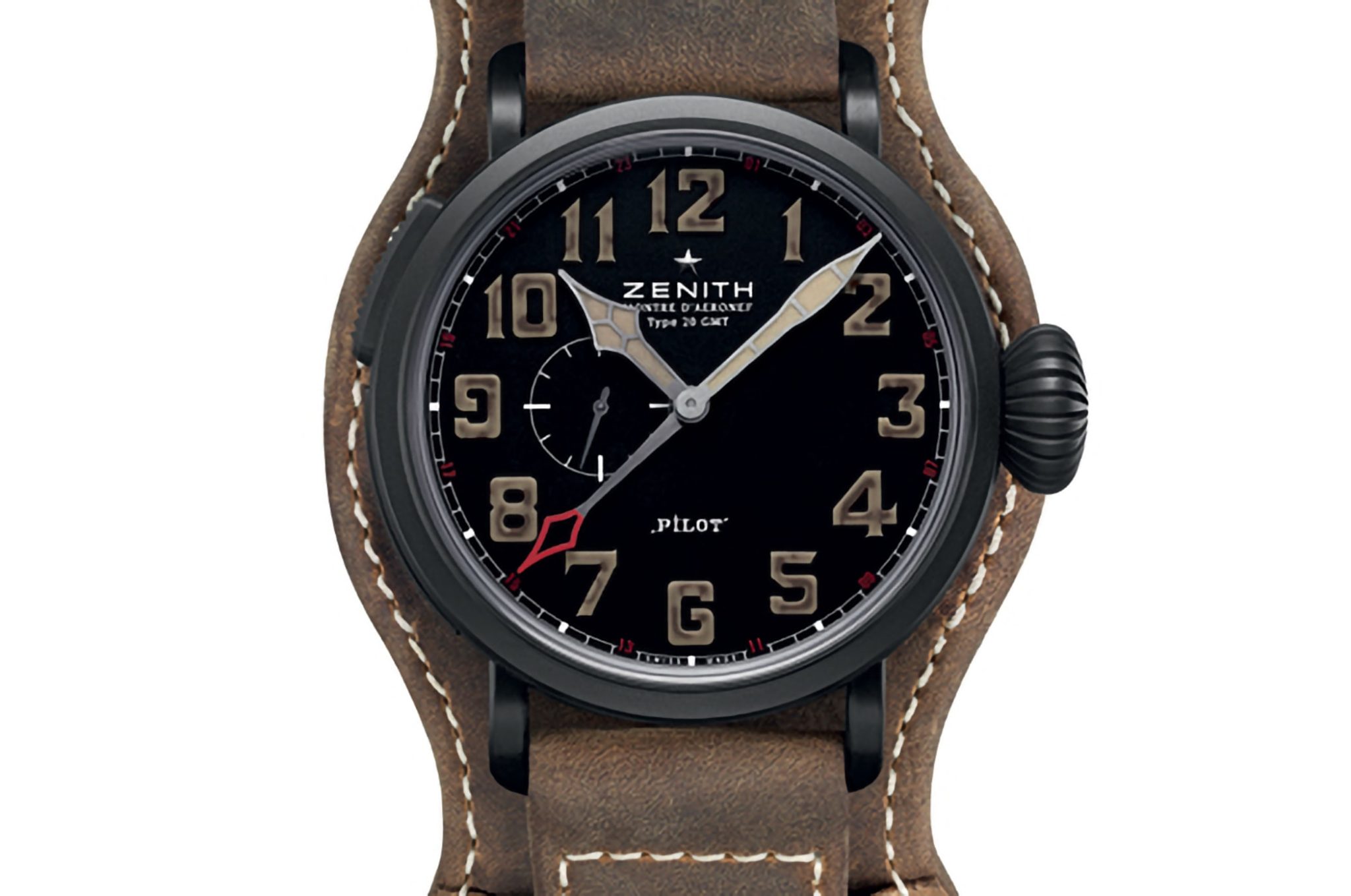
Pilot Type 20 GMT 1903
Credit © GPHG
From then on, the Pilot remained at a stable altitude. Zenith successfully introduced one version after another, including unusual models with a skeletonised movement or a sapphire crystal case.
In 2016, the dream of Zenith fans has come true. The El Primero and the Pilot came together. The Heritage Pilot Café Racer Spirit (later Heritage Pilot Ton-Up) was fitted with the 4069 version of the legendary calibre, measured 45 millimetres and was inspired by souped-up motorbikes reduced to the essentials. The latter seems somewhat unconventional for a pilot’s watch – and it is. It was probably an attempt to appeal to the vintage-oriented scene of this motorbike community as a target group. Whether this was successful is not known.
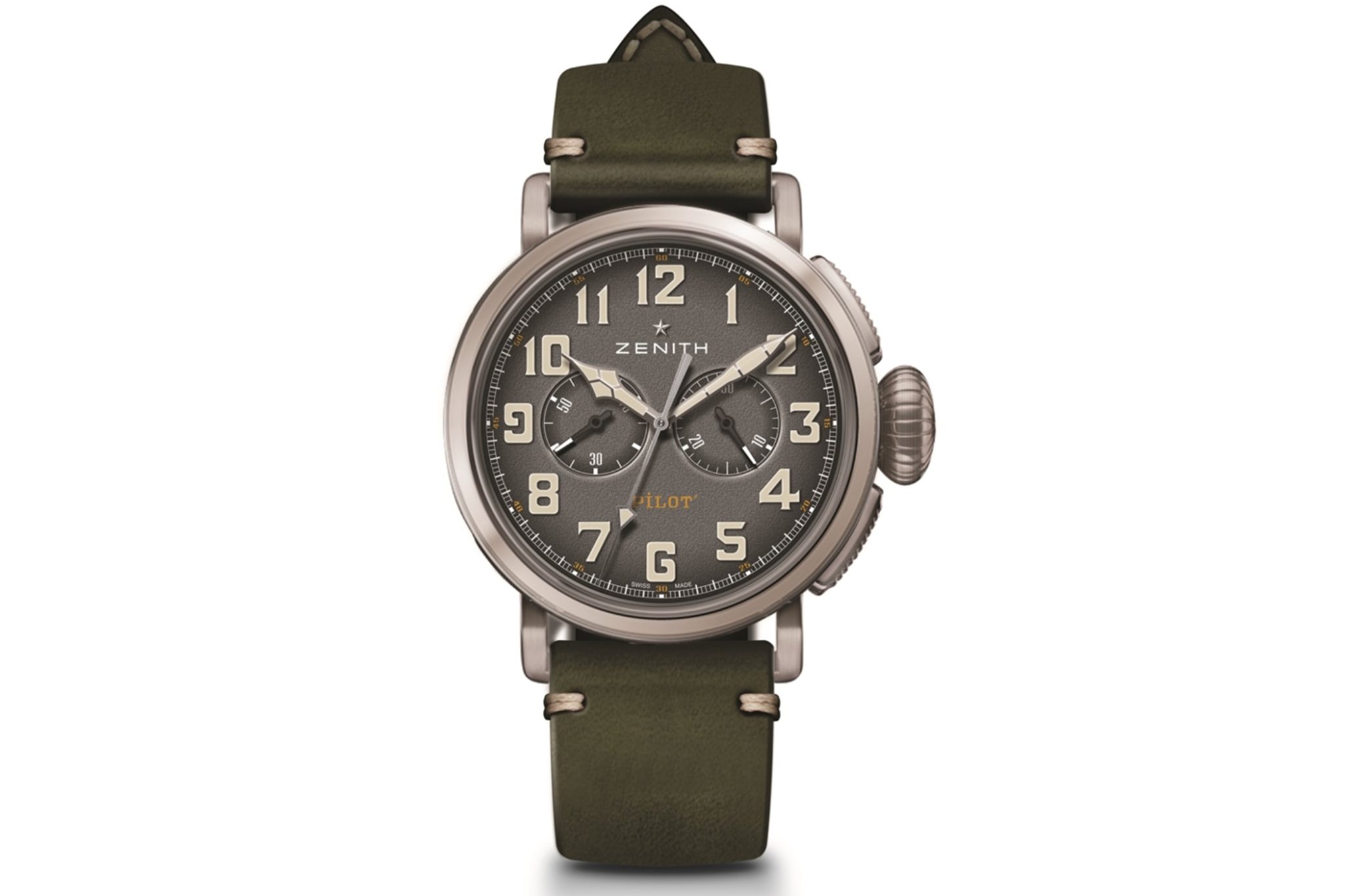
Heritage Pilot Ton-Up
Zenith quickly returned to design ideas from the world of aviation, but continued to use the Pilot as a playground and created models with retro references and meteorite dials as well as special editions with Cohiba, Trinidad cigars or the Rolling Stones. As a pilot’s watch, it obviously inspired entire generations of designers to create some extravagant creations.
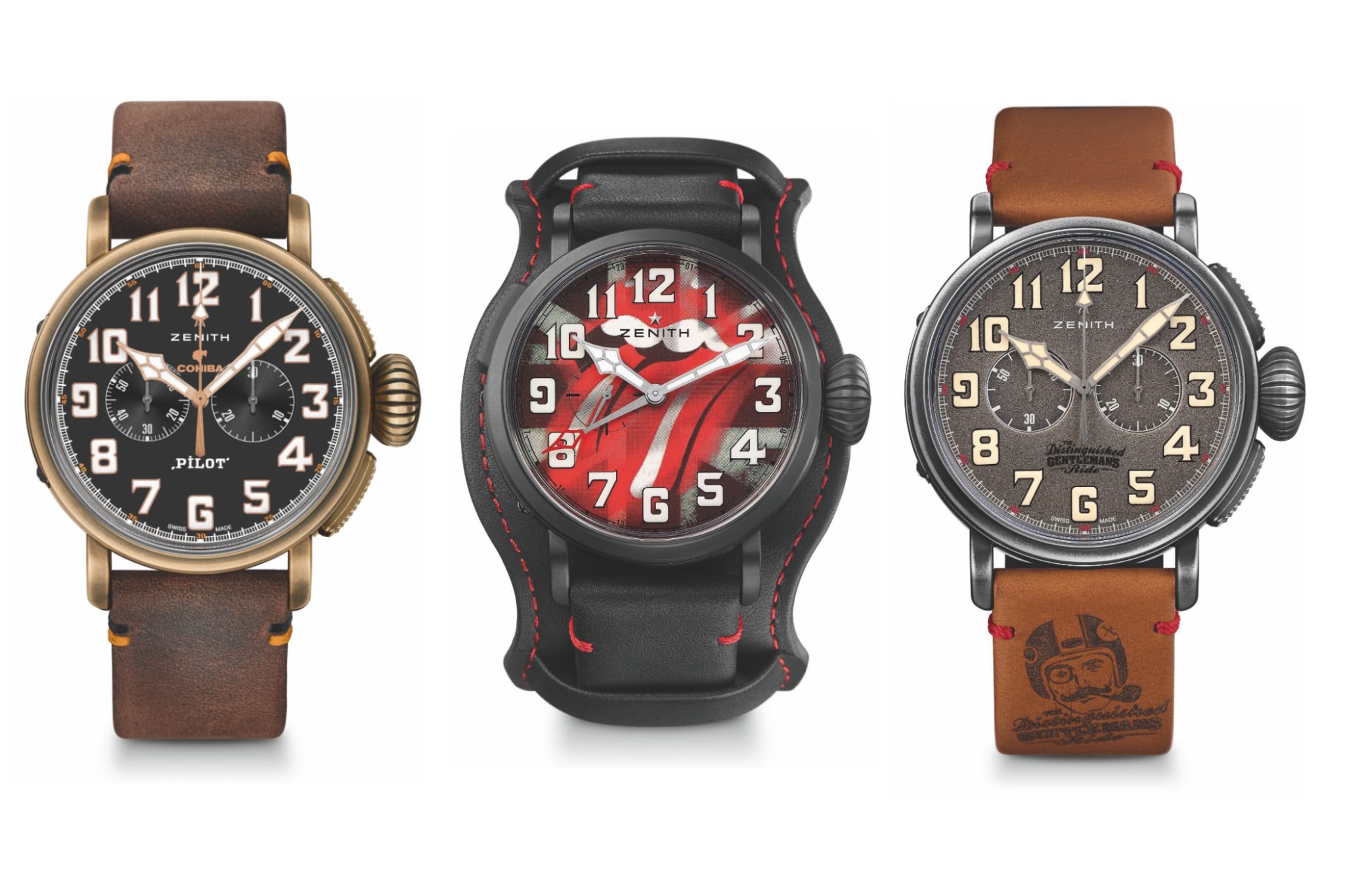
Boarding completed
Two years ago, Zenith elevated the Pilot to the status of an established collection with manifest design standards that are by no means boring: This year’s anniversary Pilot proves this without any ifs or buts. Thanks to a complete redesign, Zenith 2023 was able to appeal to watch enthusiasts who had previously found the brand’s pilot’s watch model too masculine and bold.
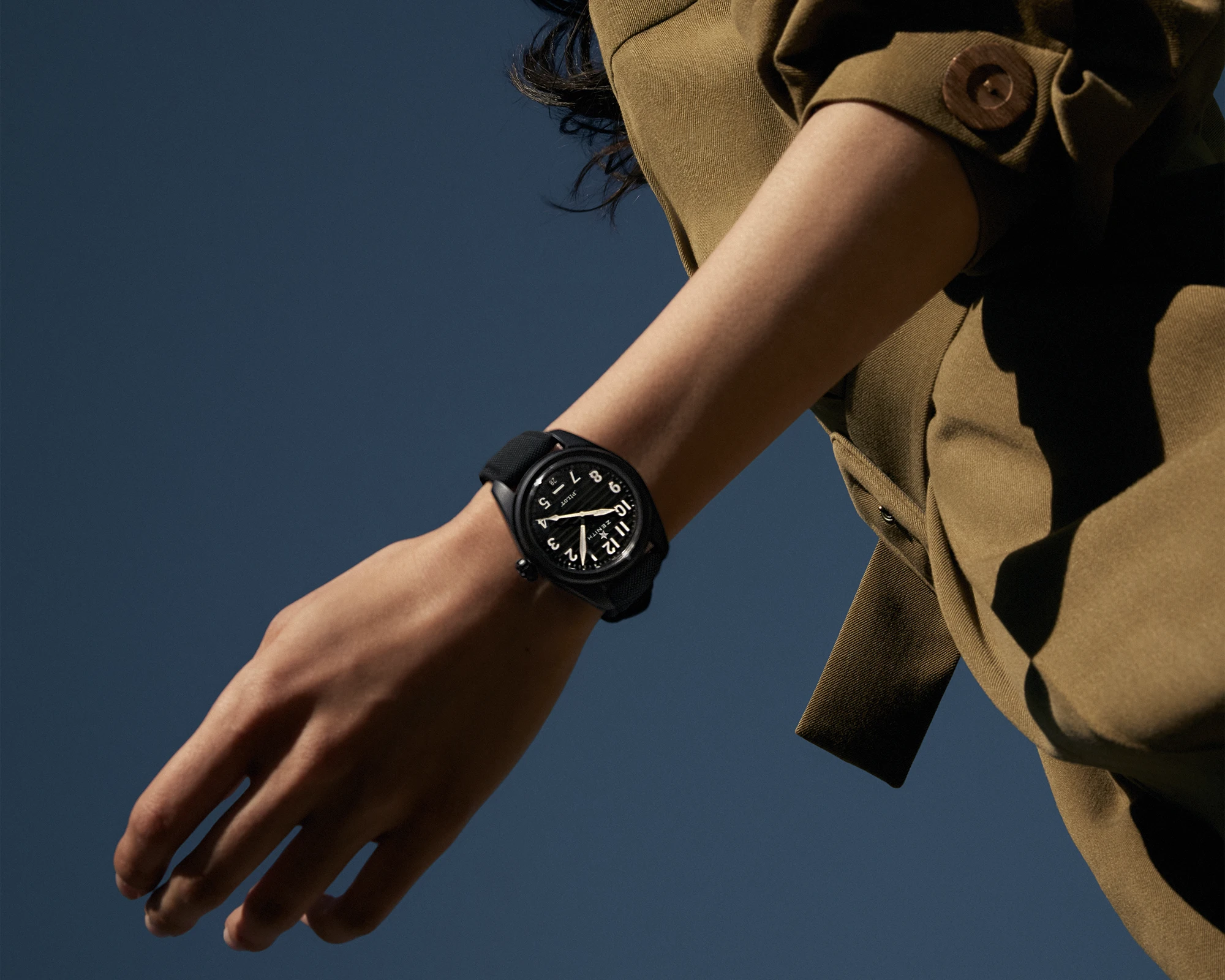
Pilot Automatic from 2023
The plan worked, as the then Zenith CEO Julien Tornare revealed in an interview with DA MAN magazine. The new Pilot collection reached its sales target just two days after its launch.
Various design optimisations were partly responsible for this success. For example, the largest of the Pilot models from 2023, the Pilot Big Date Flyback, measured just 42.5 millimetres, while the Pilot Automatic came in at just 40 millimetres. Both not only featured a smaller format in stainless steel or micro-blasted ceramic, but also a redesigned look.
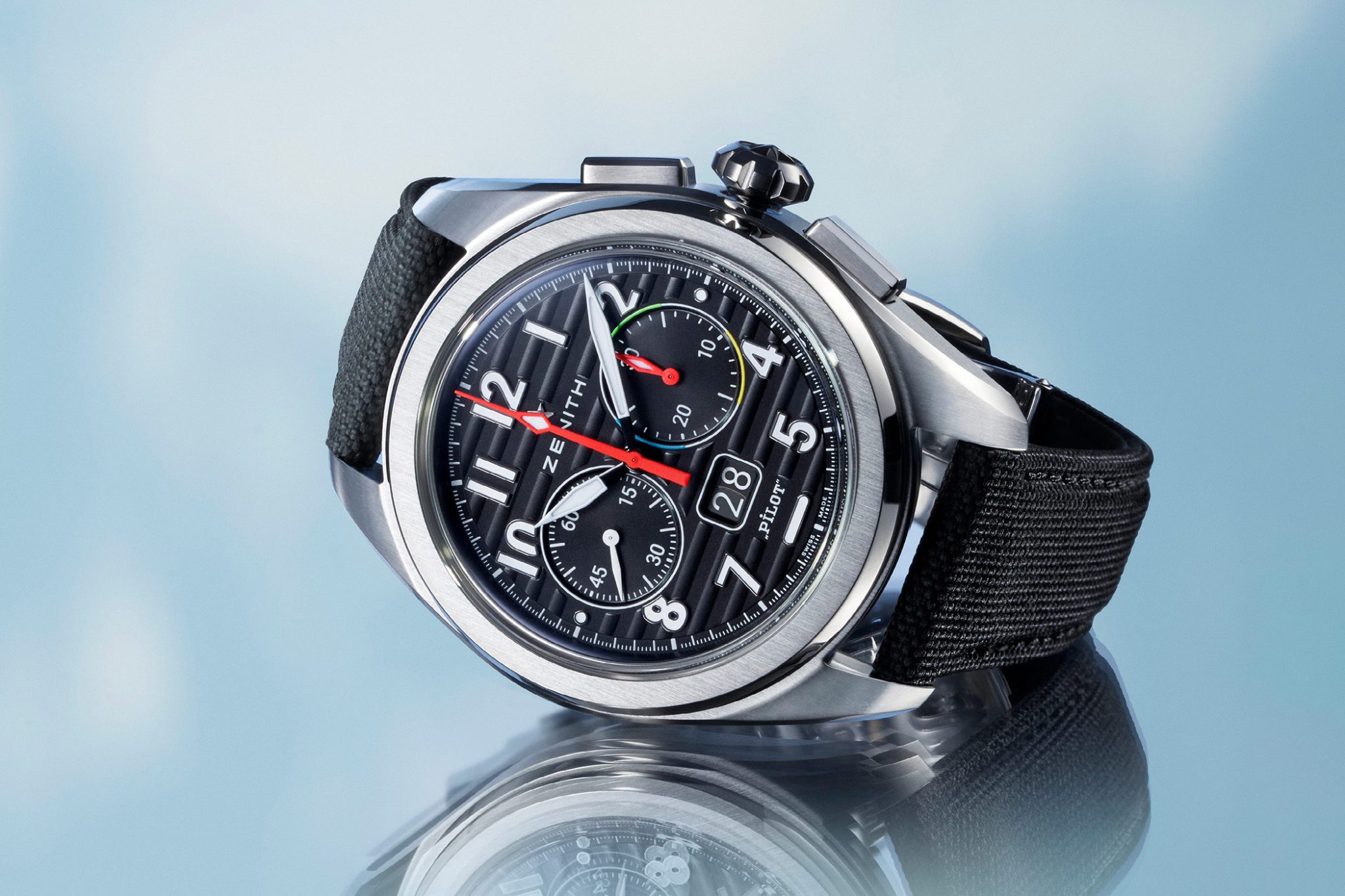
Pilot Big Date Flyback from 2023
They are characterised by the flat bezel and the weakened onion shape of the crown, which can still be operated comfortably with gloves – as the early aviators always wore them.
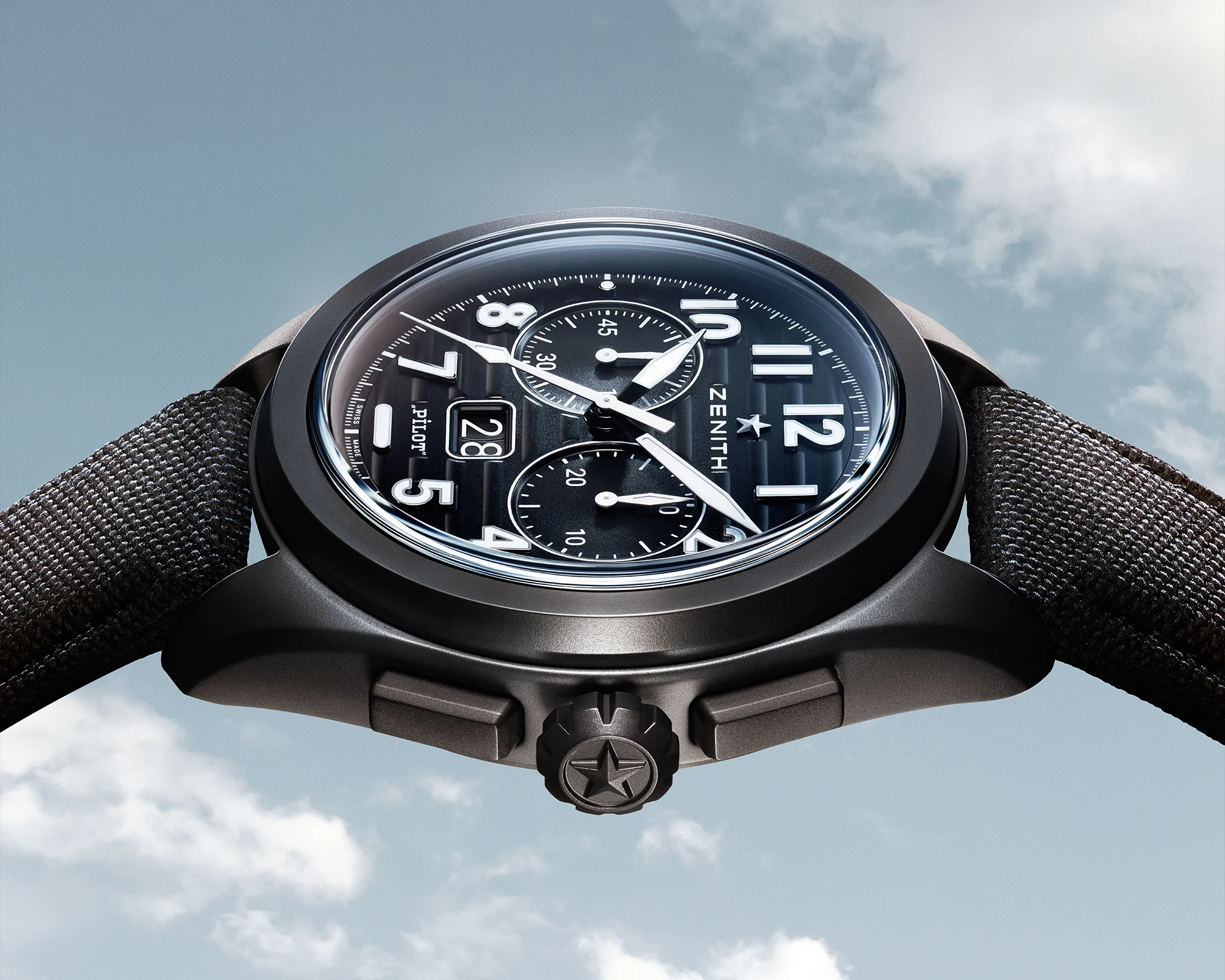
The dial has also been modernised since then, with horizontal grooves reminiscent of the corrugated aircraft panels of the last millennium. There are also applied indices filled with white Superluminova. The hour index at 6 o’clock, which is located directly above or below the date window, has been given the shape of a white horizontal line based on the artificial horizon in the cockpit. This enables the wearer to instantly recognise the orientation of the watch and easily read the time.
Both the Pilot Big Date Flyback and Pilot Automatic from 2023 are powered by an El Primero. The three-hand version is powered by the 3620, while the version with flyback chronograph function relies on the 3652. Both offer a power reserve of around 60 hours.
Pilot turns blue for the Zenith anniversary
For Zenith’s 160th anniversary this year, the Pilot will be louder again, at least in terms of colour. The Pilot Big Date Flyback 160th Anniversary Edition is part of the Blue Ceramic Chronograph Trilogy – 160th Anniversary Edition. And none of the three models can be overlooked on a wrist. Not because they have returned to their former greatness, but because of the unique blue colour of the 42.5 millimetre ceramic case, which was specially developed for the anniversary.
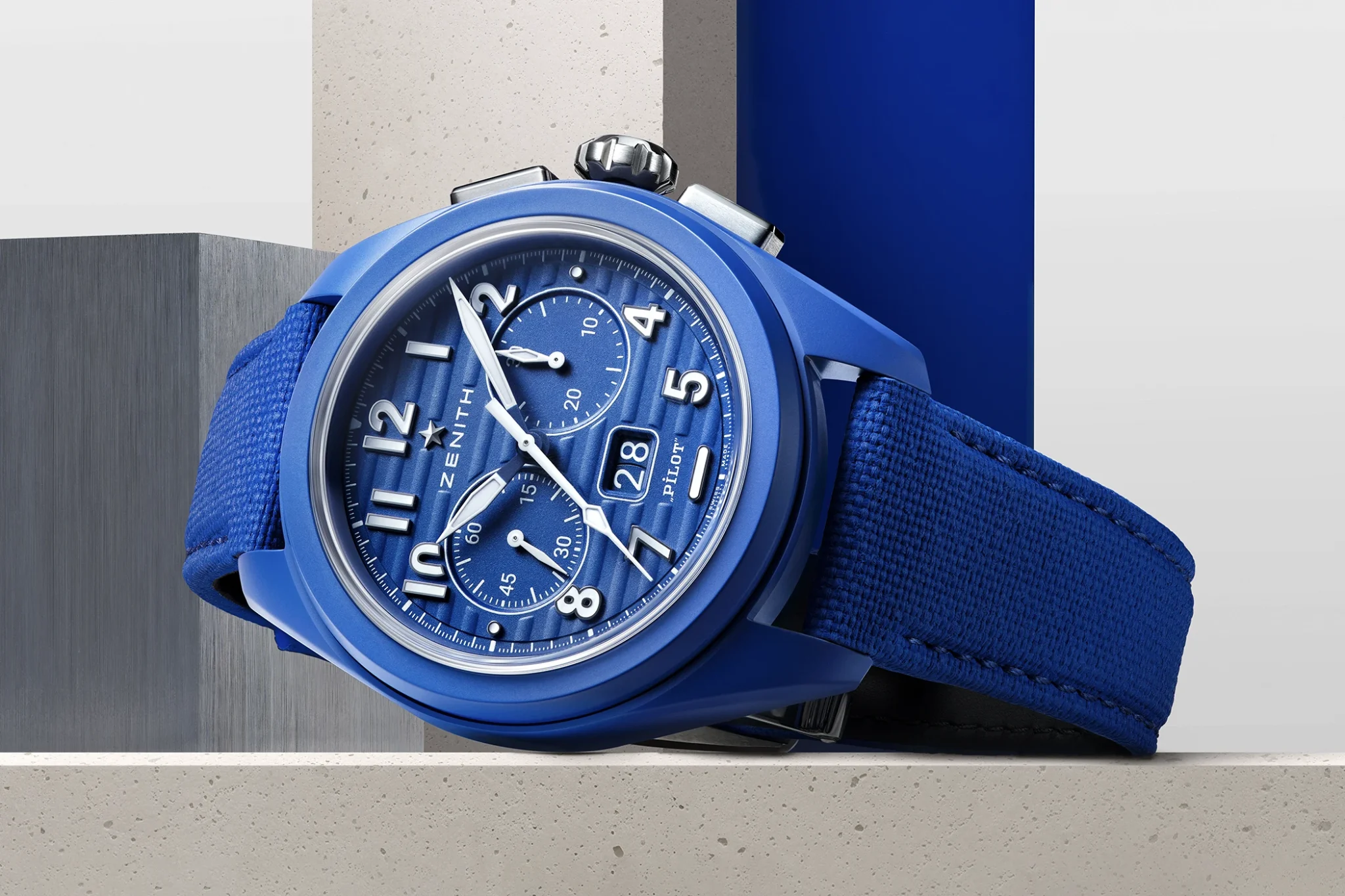
“Blue has always been a key element of Zenith’s identity,” explains Benoît de Clerck, CEO of Zenith. “The colour represents our connection to the sky and the pioneering spirit that has driven us for 160 years.”
And because the blue is so beautiful and radiant, the Pilot Big Date Flyback 160th Anniversary Edition has a pure all-over look. The wave dial, which is reminiscent of the outer skin of the legendary Junkers commercial aircraft, and the blue rubber strap with Cordura effect also proudly bear the very special Zenith blue.
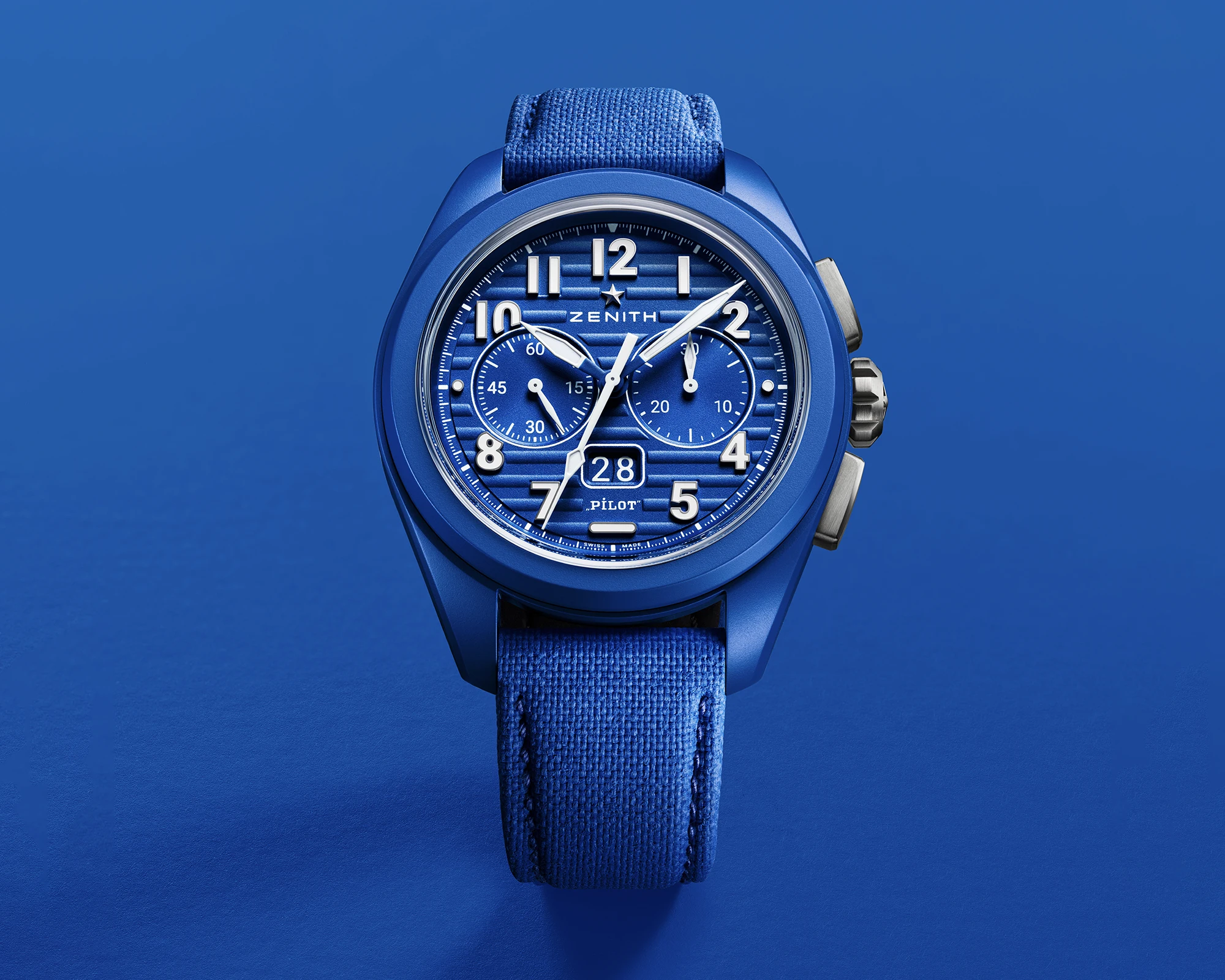

Benoît de Clerck, CEO of Zenith
Looking through the sapphire crystal of the case back, you can see the El Primero 3652 with flyback function and large date. The date changes in just 0.007 seconds thanks to the patented mechanism. The flyback feature is anything but a technical gimmick. Unlike a conventional chronograph, whose second hand has to be stopped, reset and restarted, the flyback function allows the hand to jump to zero immediately and restart timekeeping with a single press.
This gives pilots – and non-pilots – the opportunity to measure flight stages or time periods practically and quickly one after the other. In the pre-digital age, this made it easier to navigate at high altitudes. The term ‘flyback’ refers to the hand snapping back or ‘flying back’. Another name for the function is ‘Retour en Vol’, which means ‘return in flight’ in French.
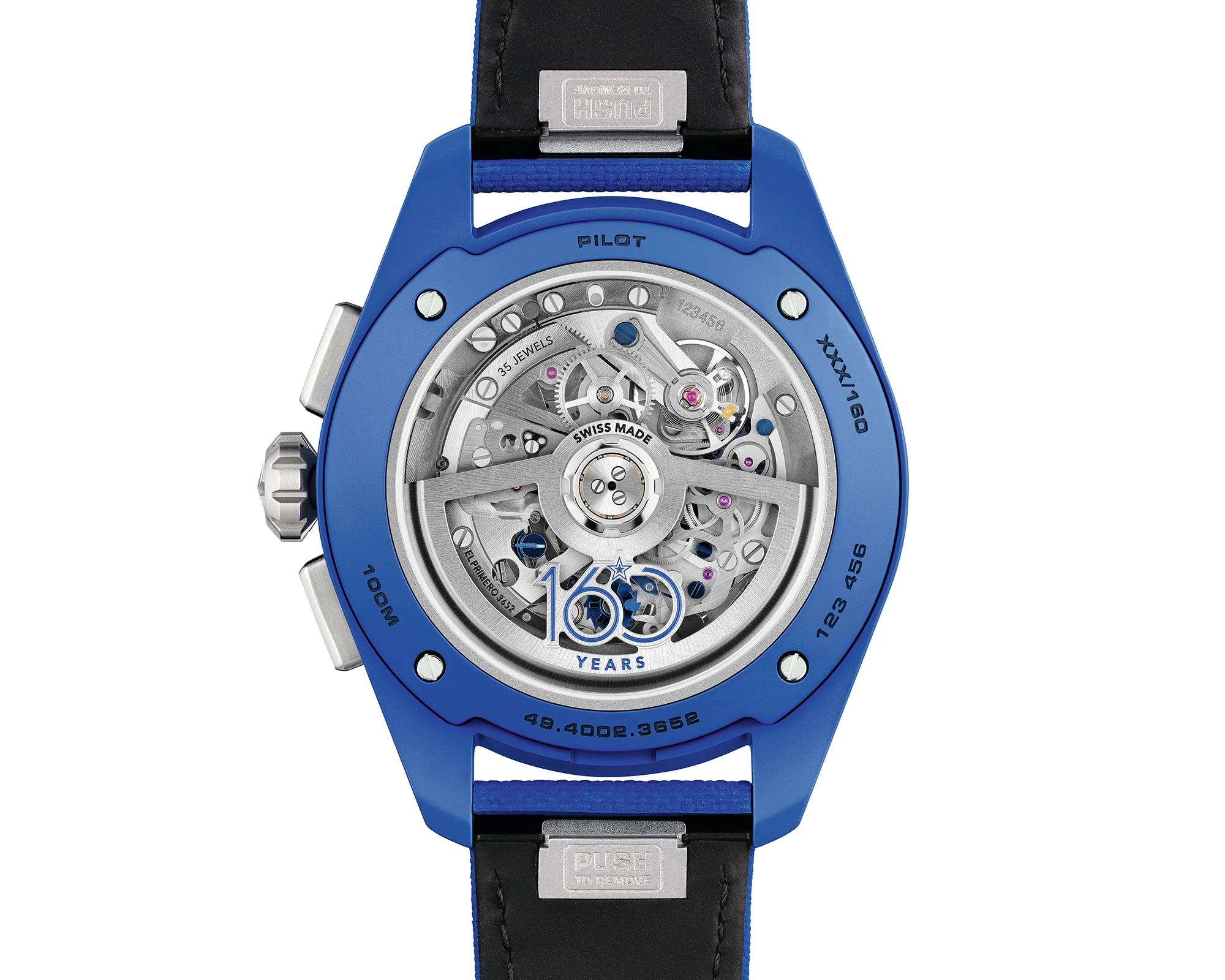
The precision of the El Primero 3652 is reliably transferred to hands and numerals coated with Superluminova, ensuring constant legibility in all lighting conditions. The Pilot Big Date Flyback 160th Anniversary Edition is available from now and costs €16,500.

